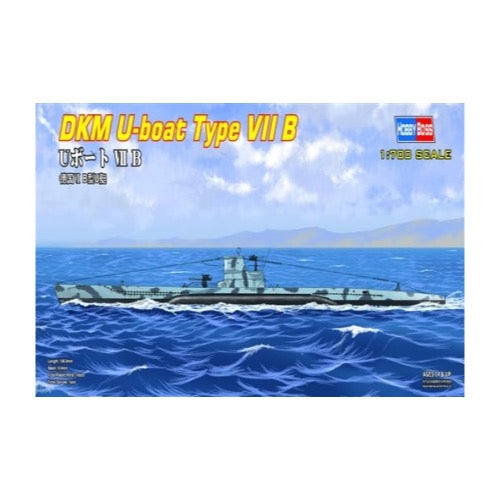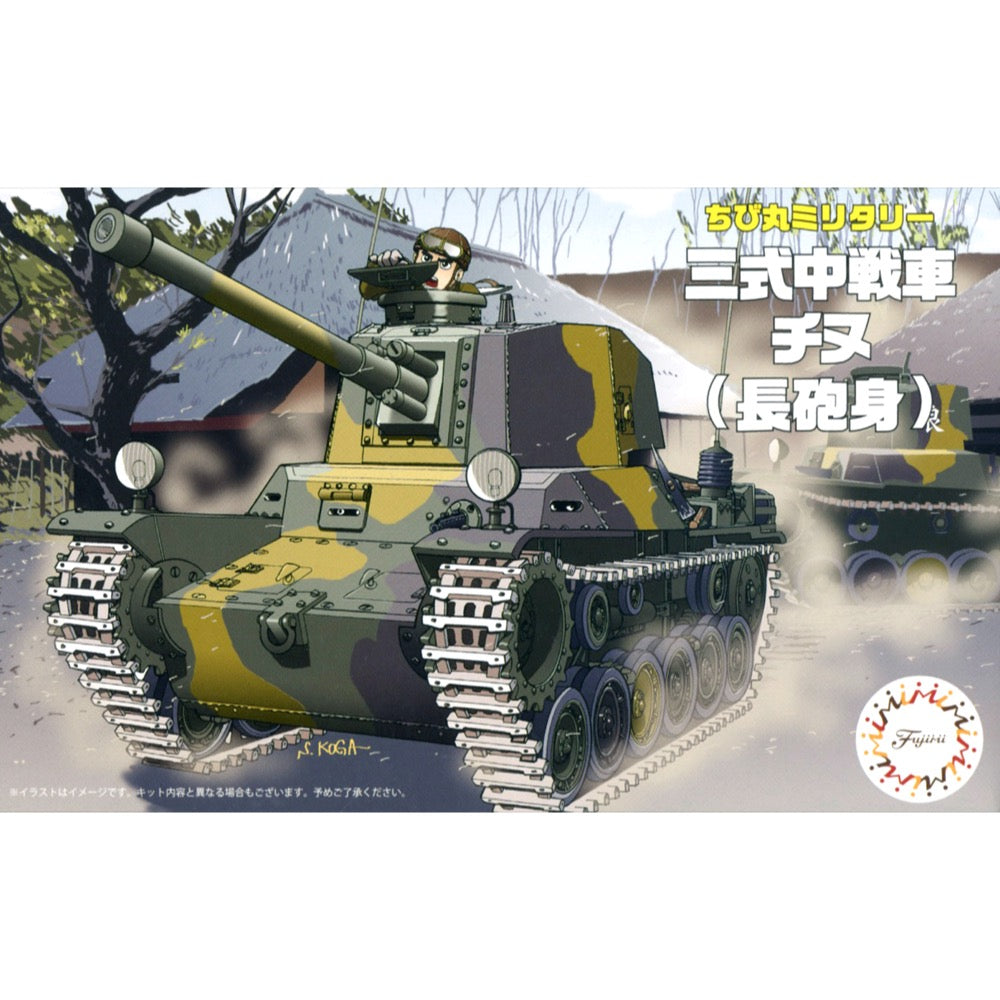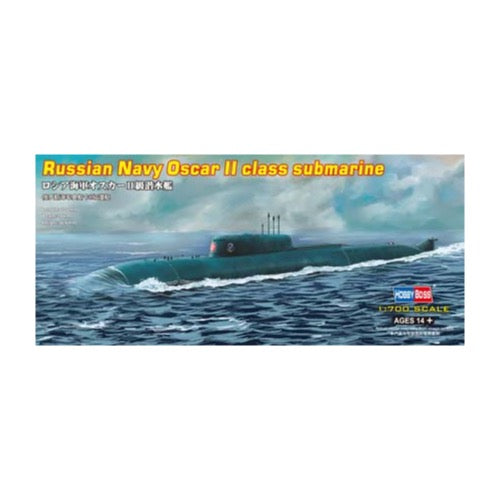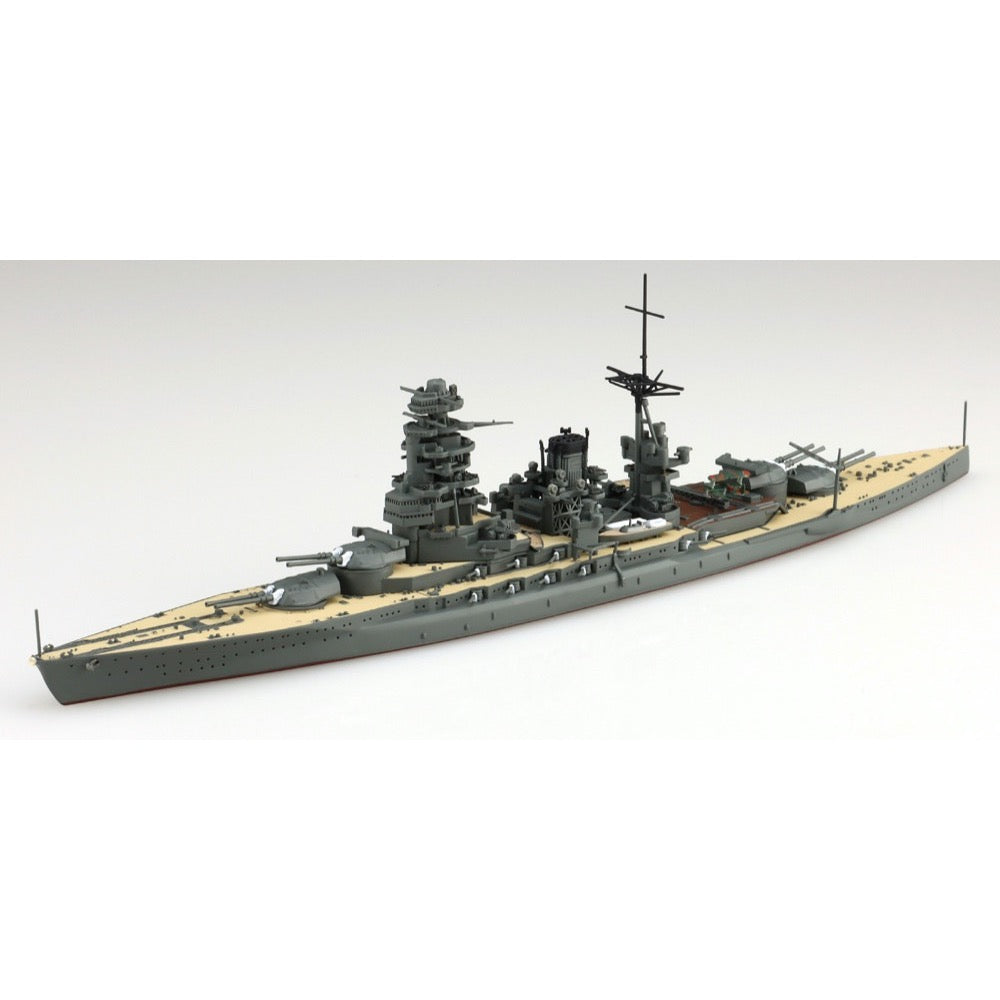
Aoshima 06654 1/700 Japanese Navy Battleship Nagato
21.00
$
<p>With the end of the Russo-Japanese War, both Japan and the United States came to regard each other as potential enemies. This was because, while the United States was aiming to acquire interests in mainland China, Japan's policy of expanding its interests in the continent, in which Japan, China, and Russia had all firmly gained a foothold, was not what they wanted. Both countries strived to increase their naval power, and after World War I, Japan built eight battleships in response to the United States's Daniels Plan (a large fleet construction plan centered on ten battleships and six battle cruisers).</p>
<p>The 88 Squadron plan centered on eight ships and battle cruisers was implemented, and the Nagato was the first main battleship of this 88 Squadron plan. The idea was that Nagato would be able to surpass or even fight on an equal footing with the battleships planned by each country's navies, and as the strongest battleship equipped with a 40cm gun -- the largest naval gun at the time -- she was built at the Kure Naval Arsenal in Taisho 6. Ground was broken on Aug. 28, 1917, she was launched on Nov. 9, 1919, and completed on Nov. 25, 1920.</p>
<p>Thanks in part to the establishment of the Washington-London Disarmament Treaty, Nagato reigned as the strongest battleship in the Japanese Navy, along with the Mutsu. Nagato took part in Operation Midway, the Battle of the Mariana Gulf, and the Battle of Leyte Gulf, but this was no longer an era in which the naval guns of battleships were used to decide battles; her only gun battle was in the Battle of Samar, when she showered the U.S. escort carrier group with her main guns.</p>
<p>After the war ended in Yokosuka, Nagato was requisitioned by the U.S. military. In July 1945, she became the target test ship for a hydrogen bomb test. Nagato showed strong defensive capabilities, enduring the powerful explosion of the hydrogen bomb and remaining afloat for several days. However, a few days later, Nagato suddenly disappeared from the ocean, and she never let anyone see her sinking.</p>
<p>Aoshima brings us a 1/700-scale waterline model kit of the Nagato, the battleship that was most popular among the people of pre-war Japan! Her appearance during the Pacific War with the addition of anti-aircraft weapons is simple, easy to assemble, and accurately reproduced with thoughtful parts configuration. Newly designed equipment has been added, including countless twin machine guns, high-angle guns, and aircraft catapults. Many parts are slide-molded for density and precision; in addition to armaments such as destroyer main guns and machine guns, carrier-based aircraft and other equipment have been updated. The following parts are updated with new molds:</p>
<ul>
<li>Type 89 12.7mm twin high-angle gun</li>
<li>Type 96 25mm twin machine gun</li>
<li>Radial davit</li>
<li>9m cutter</li>
<li>Kure Type 2 Type 5 injection machine</li>
<li>Type 95 water reconnaissance aircraft</li>
<li>90cm signal searchlight</li>
<li>110cm signal searchlight</li>
<li>12m fire launch</li>
<li>7m cutter</li>
<li>Chrysanthemum emblem</li>
<li>Anchor</li>
</ul>
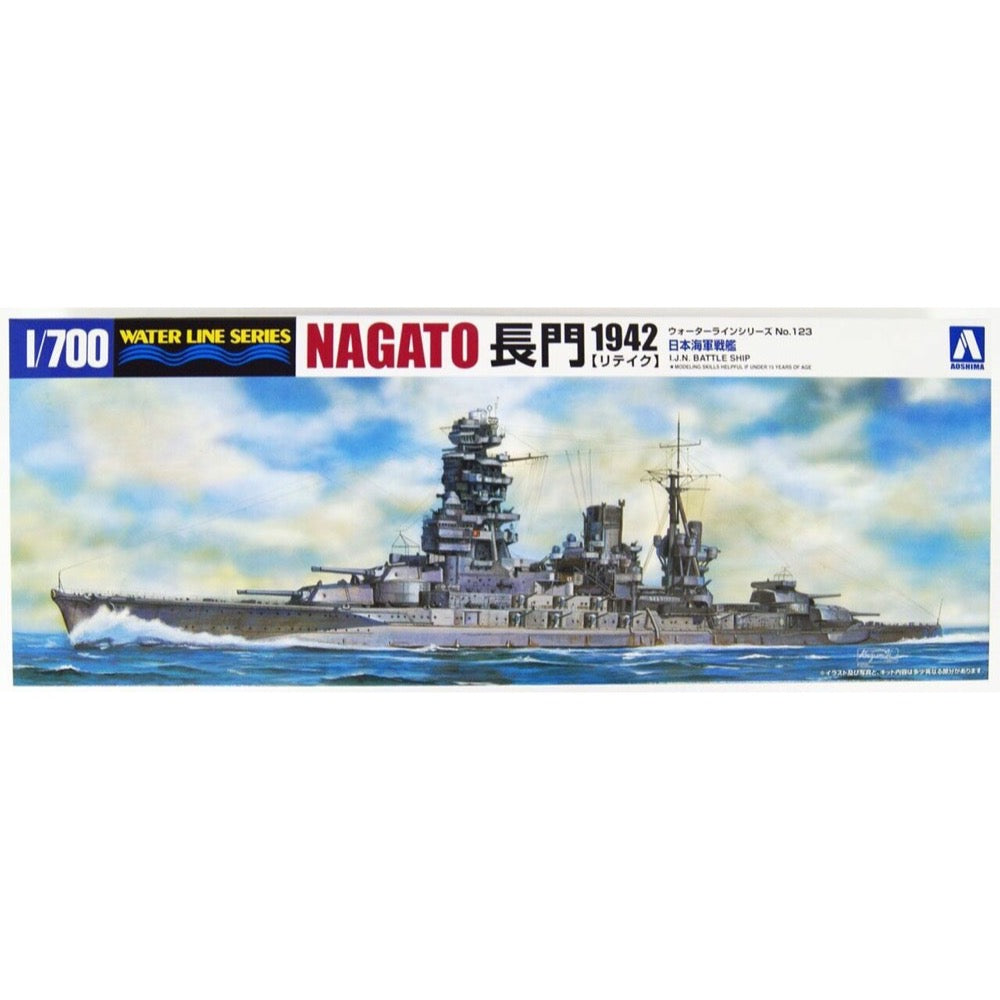
Aoshima A004510 1/700 IJN Battleship Nagato 1942 Updated Edition
23.00
$
<p>Nagato was a Japanese battleship laid under the keel in 1917, launched in November 1919, and commissioned in the Imperial Japanese Navy in November 1920. The ship was 221 meters long, 34 meters wide, and had a full displacement of 42,800 tons. The maximum speed of battleship Nagato was around 25-26 knots. The main armament at the time of the launch was 8 410 mm guns in four turrets, two guns each, and the additional armament was mainly 20 140 mm guns.</p>
<p>Nagato was the first battleship of the type with the same name - ie Nagato. Ty Nagato was the first series of battleships whose main artillery exceeded the caliber of 400 mm. Modernization of the battleship took place only in 1936, when it was extended, the entire engine room was modified, catapults for seaplanes were added, and anti-aircraft artillery was significantly expanded. At the outbreak of World War II, Nagato was the flagship of the entire Japanese fleet (Japanese: Ippon Kaigun) - it was from it that the order was sent to attack Pearl Harbor on December 7, 1941. In June 1942 he took part in the Battle of Midway but survived it. In 1944, he fought in the Battle of Leyte, where he sank the USS Gambler Bay aircraft carrier and three destroyers. She was the only Japanese battleship to survive the war in the Pacific in good condition, and in 1946 the Americans used it to test nuclear weapons in Bikini Atoll. Nagato sank on July 25, 1946.</p>
<p>Well, it may be 7.5 times more expensive than Aoshima's very-lacking older kit, but now we've at least got a great 1/700 kit of this important Japanese battleship -- one of the very few still on the surface of the water when the war ended (it was sunk during H-bomb tests at Bikini Atoll in 1946).</p>
<p>Kit is a combination of resin-cast and injection-plastic parts. Absolutely superb detail throughout. This is an advanced kit recommended for experienced modelers that requires you to cut brass rod, etc. to complete. Japanese instructions only, but well-illustrated.</p>
<p>This is a resin or white metal ship model kit.</p>
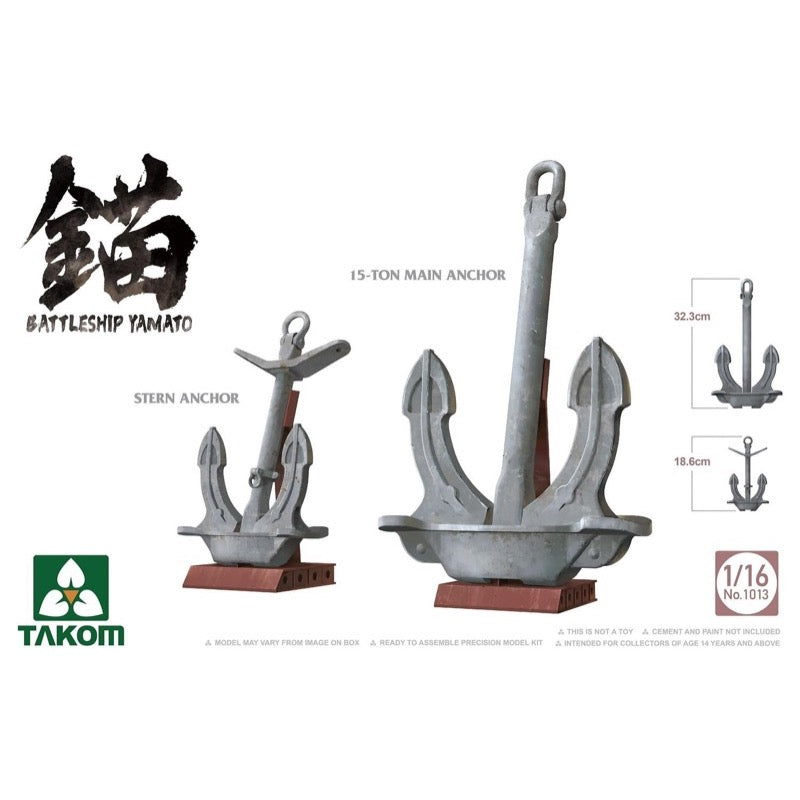
Takom Models 1013 1/16 Battleship Yamato Anchors 15ton Main Anchor and Stern Anchor
19.00
$
<p>Launched at Kure, Japan in 1940, Yamato weighed over 70,000 tons, and needed a serious anchor to hold her steady in rough seas. She required an anchor so serious, that she required two anchors; the 15-ton main anchor was over 5 meters in length and was mounted in the bow, while a smaller 3-meter anchor was mounted at the stern. This anchor arrangement helped keep Yamato steady.</p>
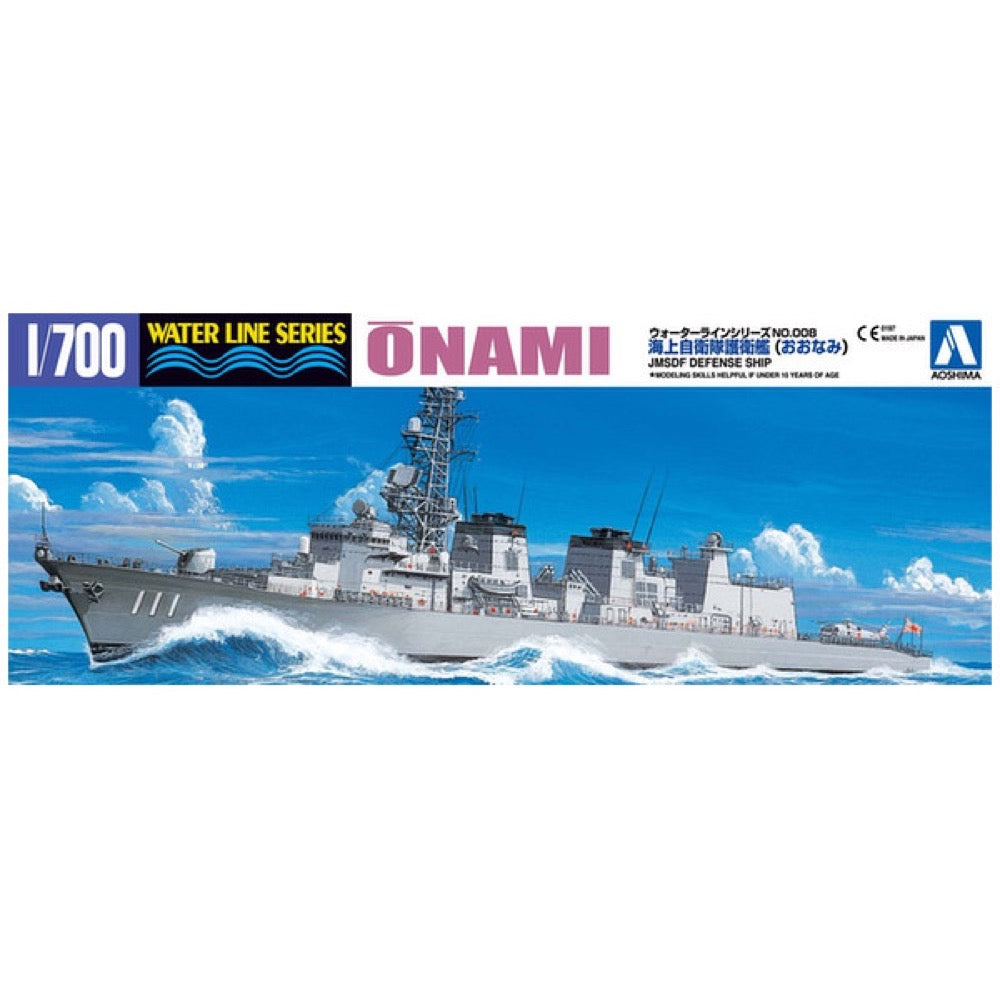
Aoshima A004599 1/700 JMSDF DD Onami
10.00
$
<p>The Takanami-class "Oonami" is the second fourth-generation helicopter-equipped general-purpose escort ship, following the "Murasame" class.</p>
<p>The ship type was designed with stealth in mind, and has improved surface running capabilities compared to the Murasame-class. It was completed on March 13, 2003, and is deployed to the Yokosuka 2nd Escort Division.</p>
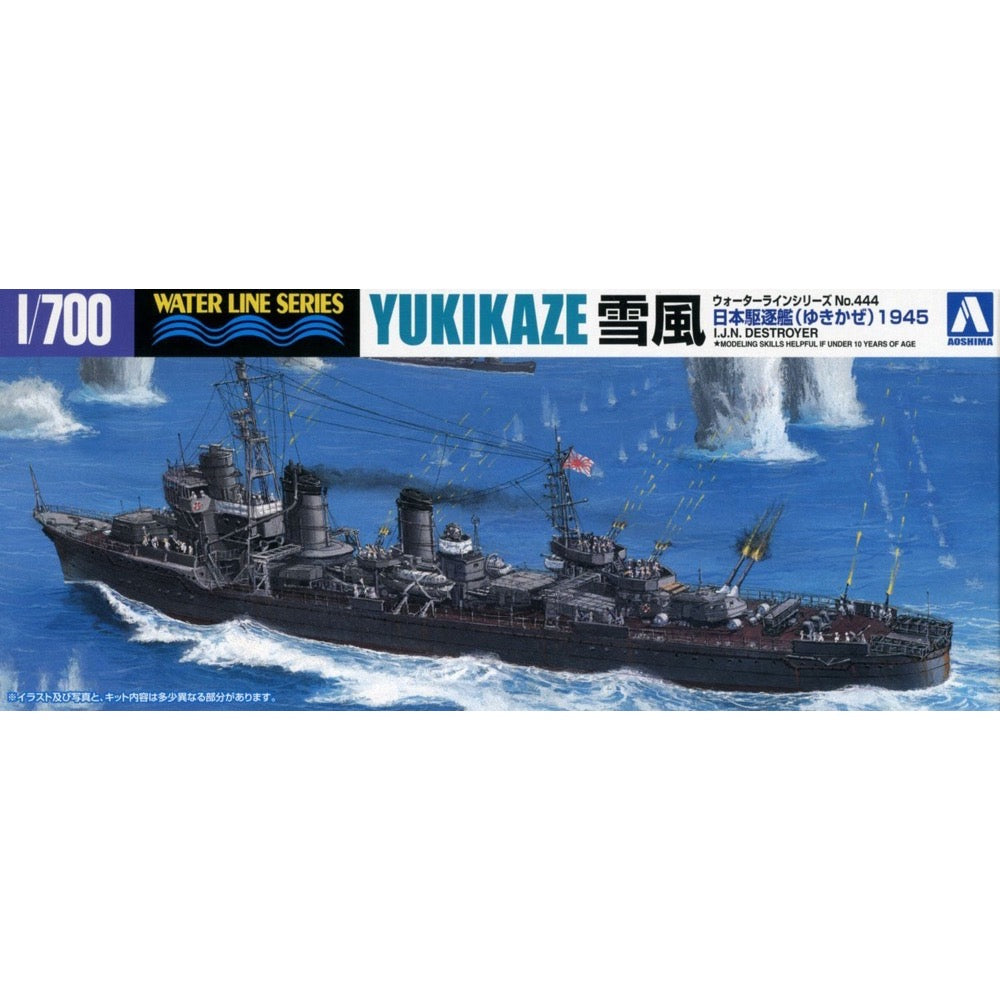
Aoshima A003395 1/700 IJN Destroyer Yukikaze 1945
10.00
$
<p>The Yukikaze was a Japanese destroyer whose keel was laid in 1938, launched in March 1939, and commissioned in the Imperial Japanese Navy in January 1940. The length of the ship at the time of launching was 118.4 m, width 10.8 m, and the actual full displacement - 2,600 tons. Destroyer Yukikaze had a maximum speed of 34.5 knots. The main armament at the time of the launch was 6 127 mm guns in three twin turrets, and the secondary armament was 4 25 mm cannons, depth charge launchers and eight 610 mm torpedo tubes with eight spare torpedoes.</p>
<p>The Yukikaze was the eighth Kagero-class destroyer and the only one to survive World War II. Units of this type were created as part of the Japanese fleet expansion program of 1937 and 1939. They returned to the use of strong artillery (6 127 mm guns), which had already appeared on the Fubuki-class destroyers in the 1920s. The provisions of the disarmament treaties were also not respected, thanks to the czum the Japanese designers had complete freedom in designing. As a result, ships with strong artillery and torpedo armaments, good sea performance, and especially - unlike the previous Japanese destroyers - had no problems with stability and overall durability of the structure. The only drawback was the weak anti-aircraft armament, which, however, was systematically strengthened during the war in the Pacific. Destroyer Yukikaze's combat career was very rich and began in World War II with supporting Japanese landing operations in the Philippines in December 1941. Then, at the beginning of 1942, he supported further Japanese actions in the region of the Dutch East Indies. In June he took part in the Battle of Midway, and from August 1942 he served in the area of the islands of the Solomon Islands archipelago, fighting in the struggle for Guadalcanal. He was an important element there, the so-called Tokyo Express, i.e. the use of Japanese fast destroyers and light cruisers to transfer supplies to soldiers fighting in the Gudalcanal. In the course of the fighting, he took part in the battle near the Santa Cruz Islands (October 1942). In 1944 he also fought in the Battle of the Philippine Sea and in Leyte Bay - he survived both of those battles! Moreover, in April 1945 it was used as a cover for the battleship Yamato during Operation Ten-Go. After this operation, it served in its home waters and, despite numerous Allied air attacks and damage after landing on a mine, it remained until the end of the war. In July 1947 it was handed over as war reparations to the Chinese fleet, where it served under the name Tan Yang until 1956. Destroyer Yukikaze aka. Tan Yang was scrapped in 1970.</p>
<p>30 years have passed since the first release in the now-famous 1/700 Water Line Series. The manufacturers involved in this endeavour have now begun to replace their old kits with newly-tooled models. The Yukikaze is the 8th ship of the Kagerou-class DD and was the only ship out of its nineteen sister ships to survive the war through several battles. The Kagerou-class DD was the latest design of the IJN fleet destroyer, with improved speed, longer cruise range, and powerful armament. Aoshima's new kit meets today's molding standards and the design itself reflects recent research, depicting the ship's final form, looking like a hedgehog, with many AA guns installed. The kit on the whole blows away the quality of older versions of the same kit!</p>
<p>This is an injection-plastic ship model kit.</p>
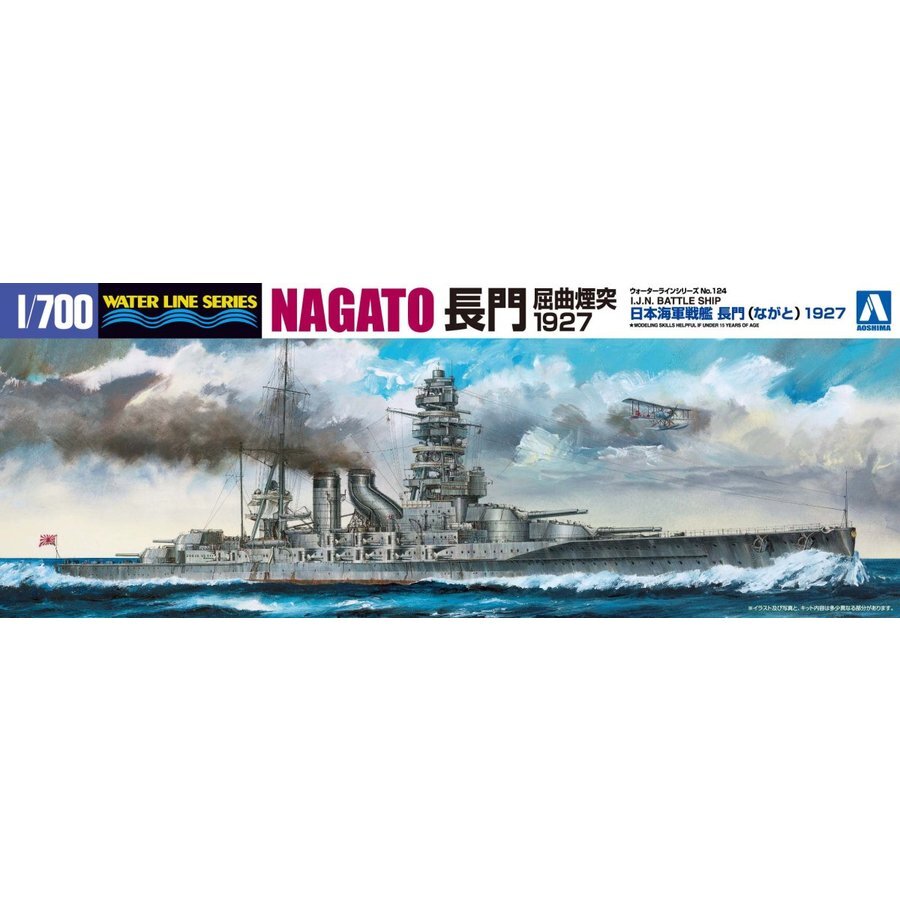
Aoshima A004511 1/700 IJN Battleship Nagato 1927 Winding Chimney
29.00
$
<p>Nagato was a Japanese battleship laid under the keel in 1917, launched in November 1919, and commissioned in the Imperial Japanese Navy in November 1920. The ship was 221 meters long, 34 meters wide, and had a full displacement of 42,800 tons. The maximum speed of battleship Nagato was around 25-26 knots. The main armament at the time of the launch was 8 410 mm guns in four turrets, two guns each, and the additional armament was mainly 20 140 mm guns.</p>
<p>Nagato was the first battleship of the type with the same name - ie Nagato. Ty Nagato was the first series of battleships whose main artillery exceeded the caliber of 400 mm. Modernization of the battleship took place only in 1936, when it was extended, the entire engine room was modified, catapults for seaplanes were added, and anti-aircraft artillery was significantly expanded. At the outbreak of World War II, Nagato was the flagship of the entire Japanese fleet (Japanese: Ippon Kaigun) - it was from it that the order was sent to attack Pearl Harbor on December 7, 1941. In June 1942 he took part in the Battle of Midway but survived it. In 1944, he fought in the Battle of Leyte, where he sank the USS Gambler Bay aircraft carrier and three destroyers. She was the only Japanese battleship to survive the war in the Pacific in good condition, and in 1946 the Americans used it to test nuclear weapons in Bikini Atoll. Nagato sank on July 25, 1946.</p>
<p>This highly-detailed waterline kit of the Nagato builds into the version as outfitted in 1927. </p>
<p>This is an injection-plastic ship model kit.</p>
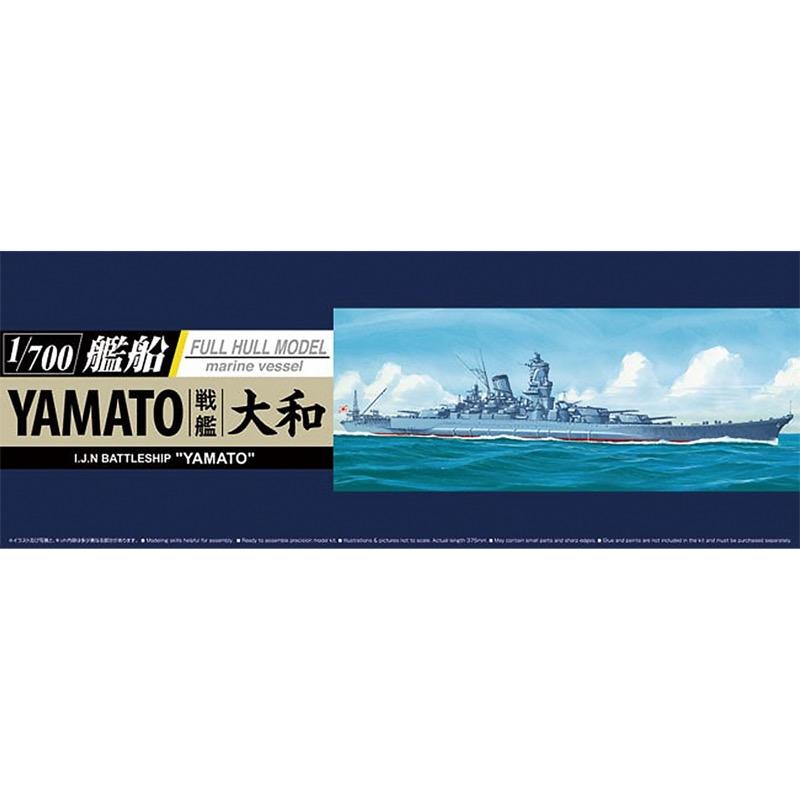
Aoshima A005263 1/700 Battleship Yamato Full Hull
29.00
$
<p>Yamato was a Japanese battleship laid under the keel in 1937, launched in August 1940, and commissioned in the Imperial Japanese Navy in December 1941. The total length of the ship was 263 meters, width 38.9 meters, and a full displacement of 65,000 tons. The maximum speed of battleship Yamato was around 27-28 knots. The main armament at the time of the launch was 9 460 mm guns in three turrets of three guns each, and the secondary armament was mainly 12 152 mm guns.</p>
<p>Yamato was the first battleship of the type with the same name - ie Yamato. The genesis of this type of battleships dates back to the early 1930s, when the command of the Japanese Navy, hoping for the Washington Treaty to expire soon (from 1922) and preparing for the war in the Pacific, decided to create the most powerful and best battleship in history, which would outclass their counterparts in the US Navy or Royal Navy, and keep its construction completely secret. As a result, when it entered service in 1941, Yamato was the most powerful battleship (the 460 mm cannon had a shot range of 42,000 meters!) And was the best armored ship of this type in the world! So the assumptions of the Imperial Navy were fully realized! Yamato became the flagship of the entire Japanese Navy in 1942. It was from his deck that Isoroku Yamamoto commanded the defeat for Japan at the Battle of Midway (June 1942). Yamato spent the years 1943-1944 in the Japanese mother waters, taking a limited part in the fighting in the Pacific. In June 1944 he took part in the Battle of the Philippine Sea, but his role in it was marginal. He also fought in the Battle of Leyte in October 1944. Yamato's last combat mission was his suicide voyage against the American forces landing in Okinawa (Operation Ten-Go) - after being hit with at least 11 torpedoes and 8 bombs, this largest battleship in history sank on April 7, 1945.</p>
<p>Aoshima's excellent 1/700 kit of the massive IJN battleship Yamato, this time released as a full-hull model (can still be built as a waterline model). Includes a stand with a nameplate on which to display the completed full-hull model.</p>
<p>This is an injection-plastic ship model kit.</p>
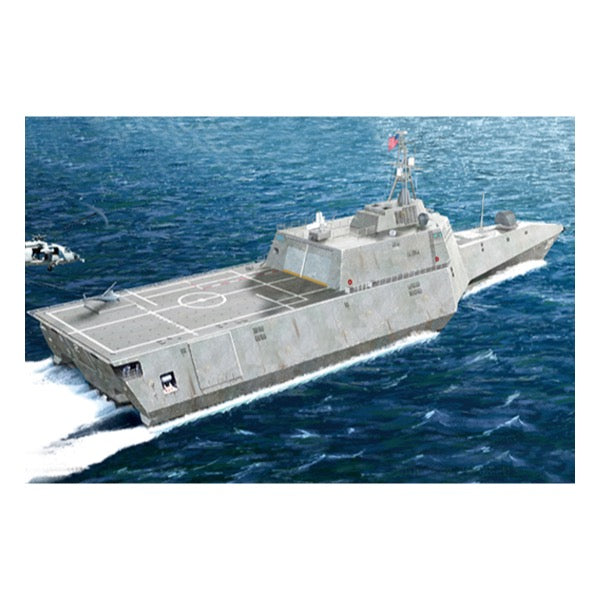
Trumpeter 04548 1/350 USS Independence (LCS-2)
22.00
$
<p>The US Navy Independence (LCS-2), the prototype of an independent class of Littoral Combat Ship, will be the sixth vessel in the history of the US Navy to be named after the Independence. The ship was designed by General Dynamics for the US Navy's Littoral Combat Ship project and will compete with the Liberty No. designed and built by Lockheed Martin. The ship was designed as a fast assault carrier with different modules for different missions. The ship uses a three-hull design with a speed of more than 40 knots (74km/h, 46mph). The ship was delivered to the US Navy on January 13, 2010</p>


